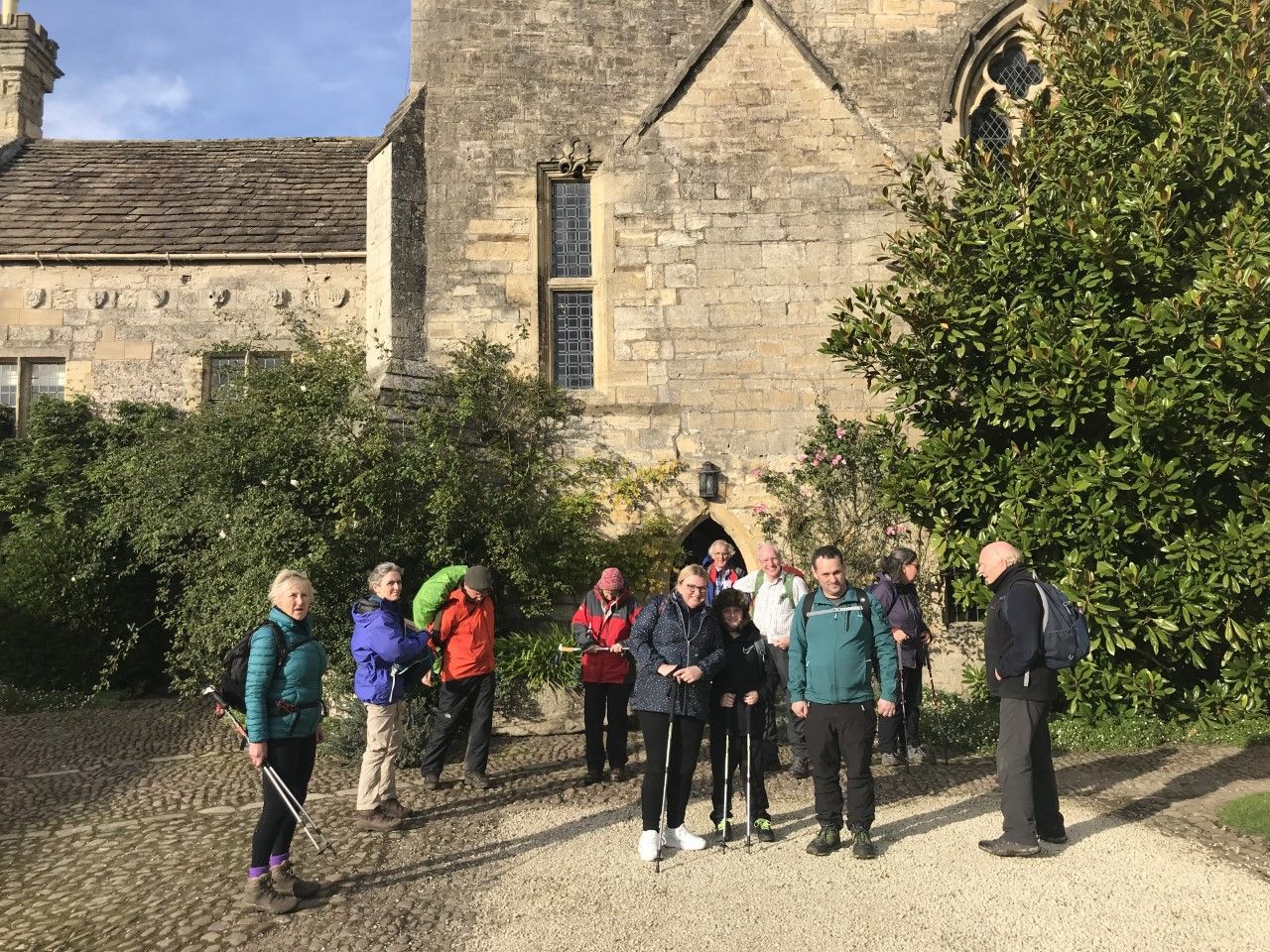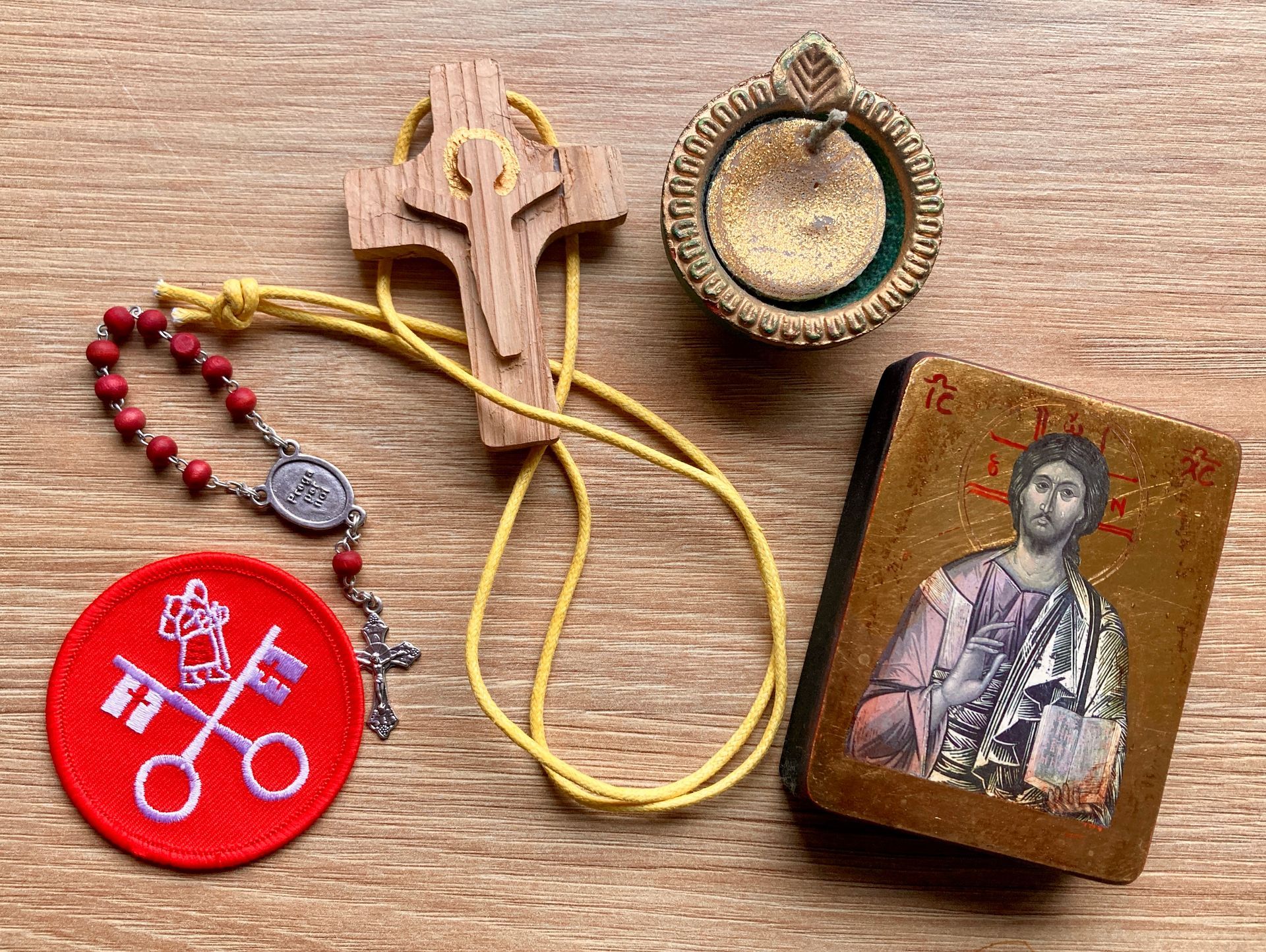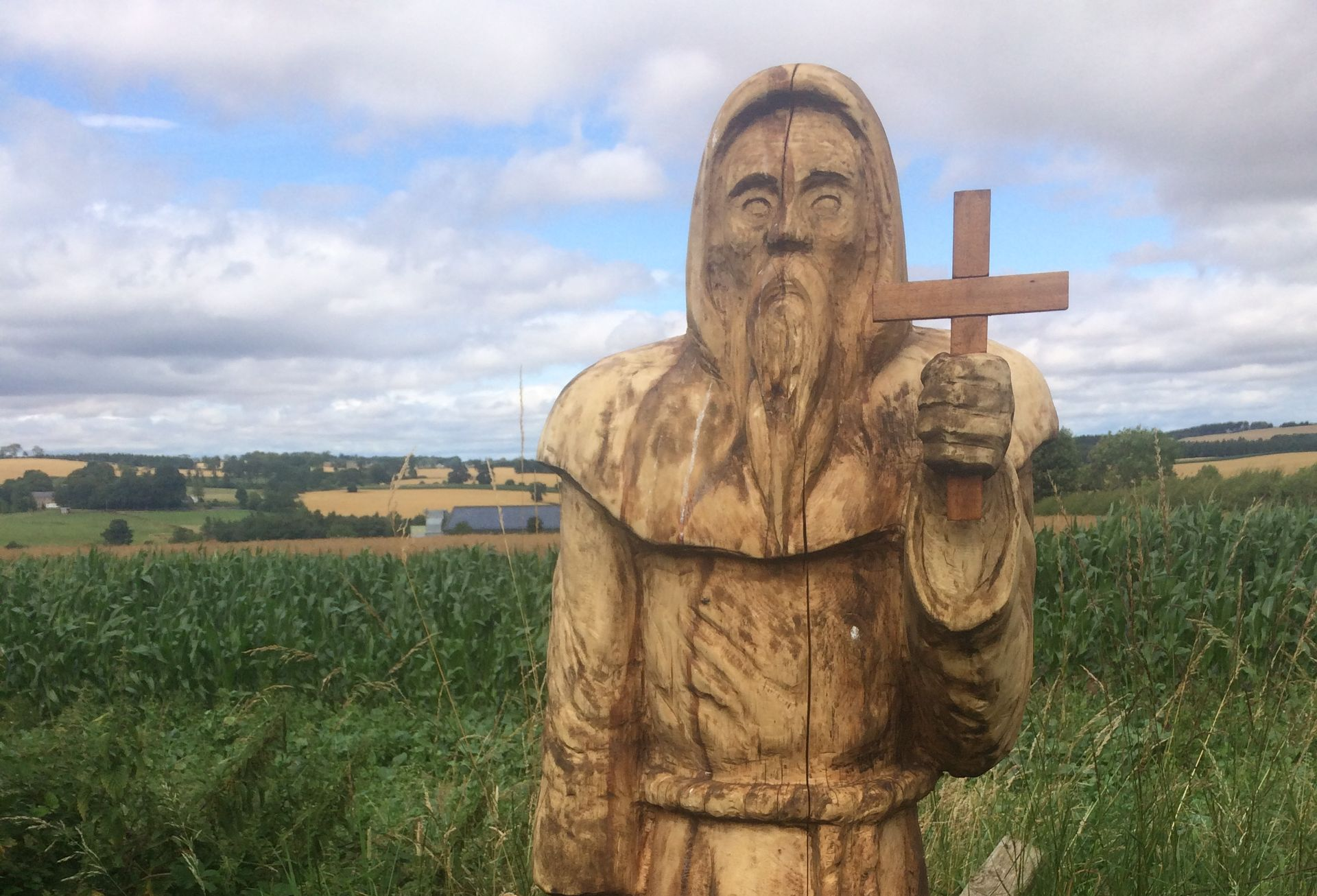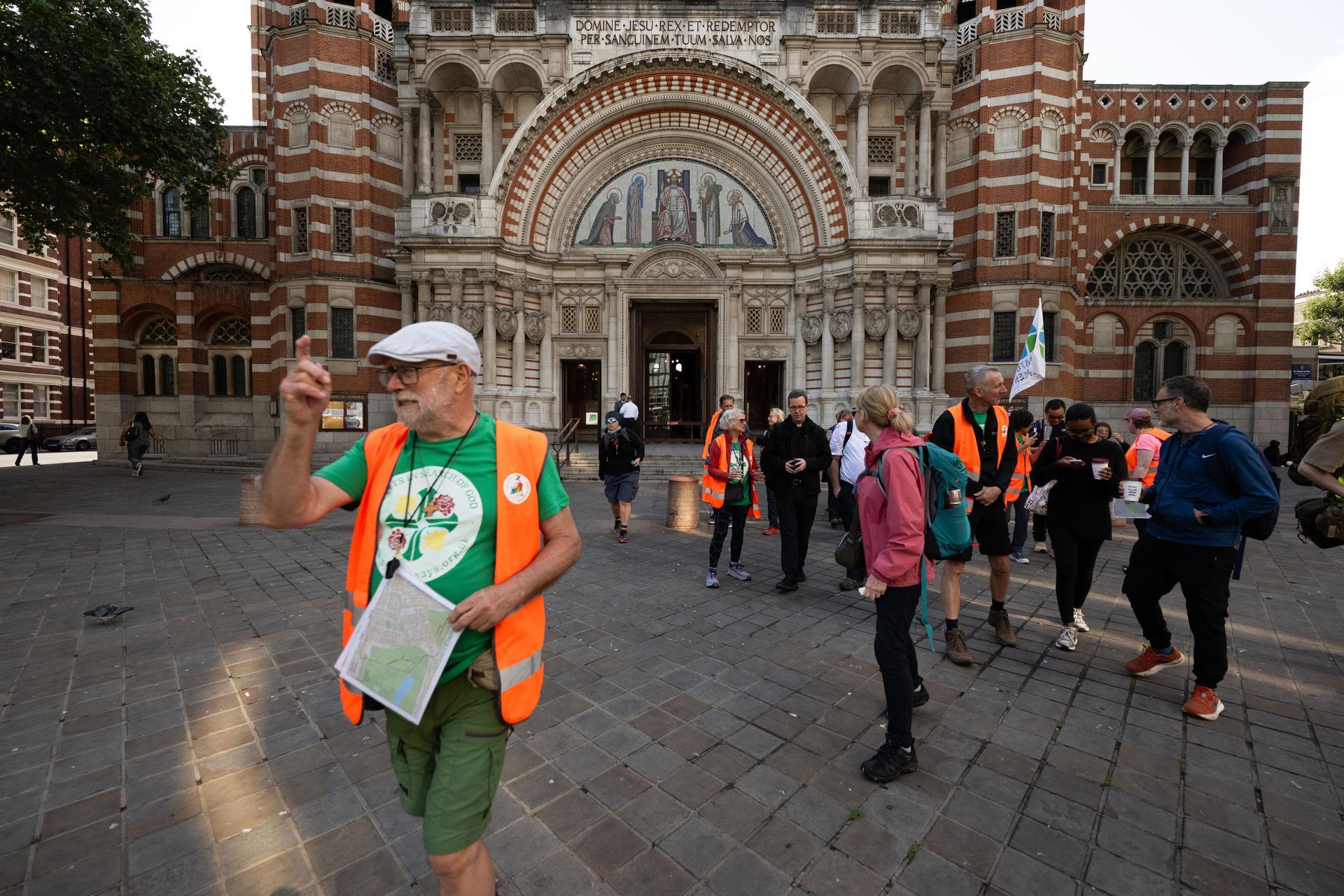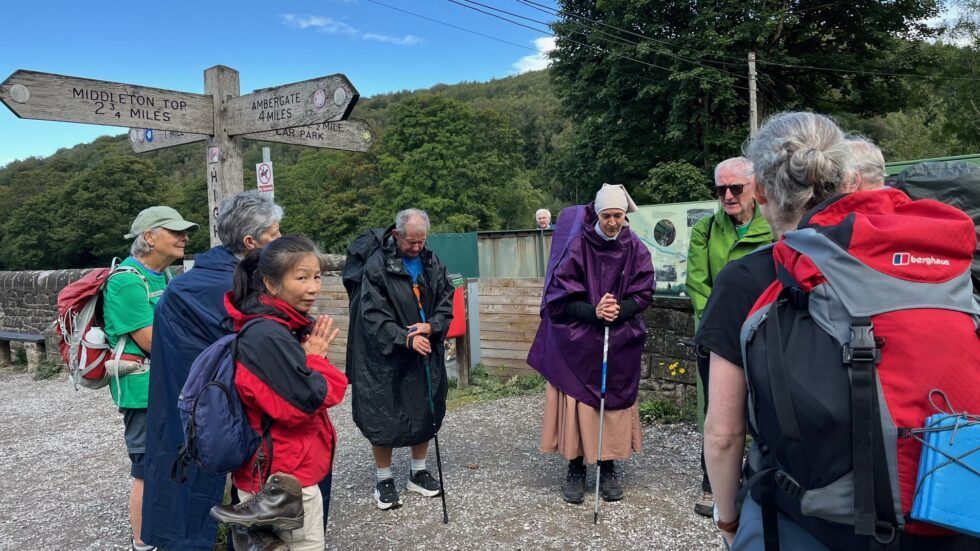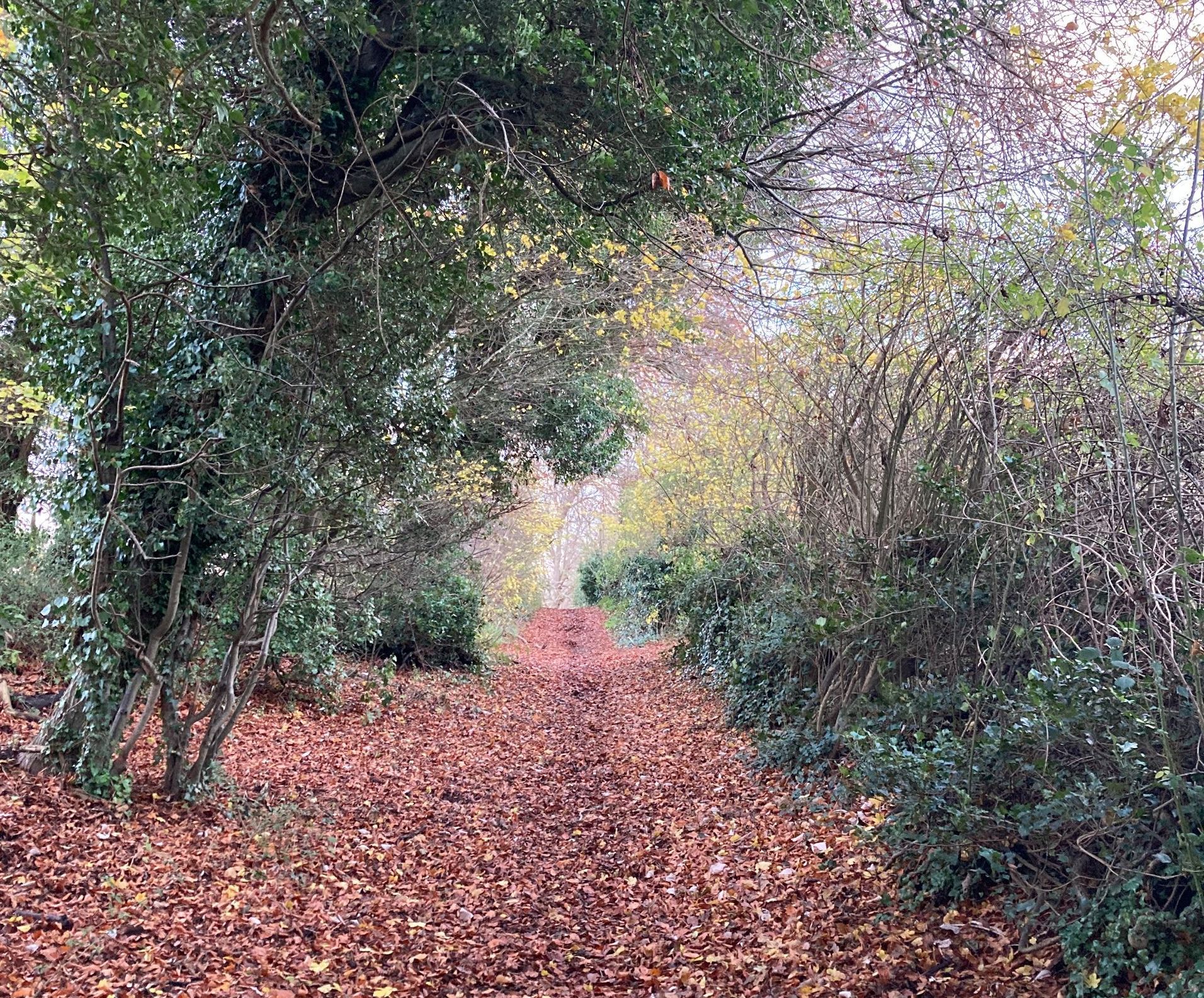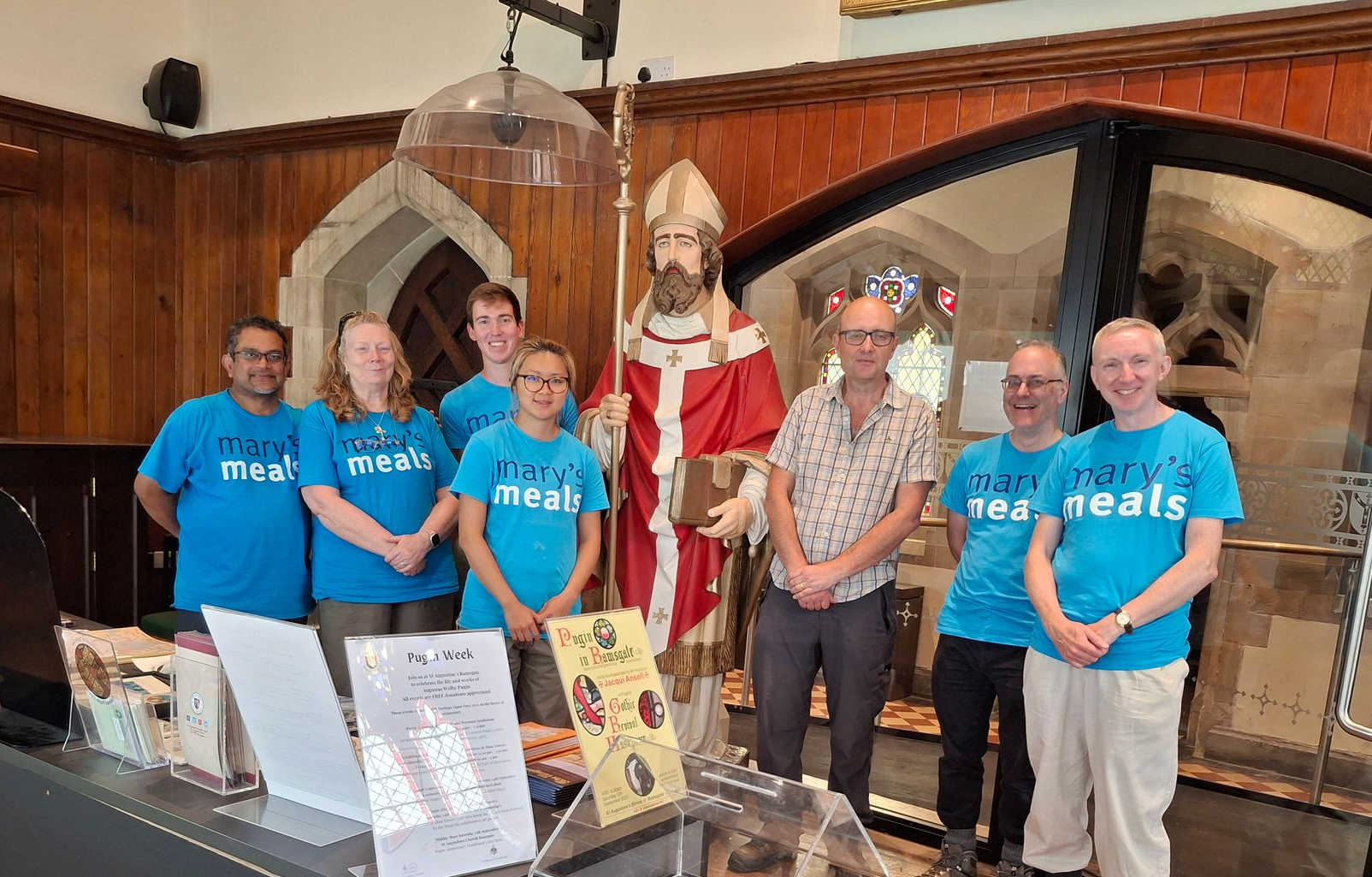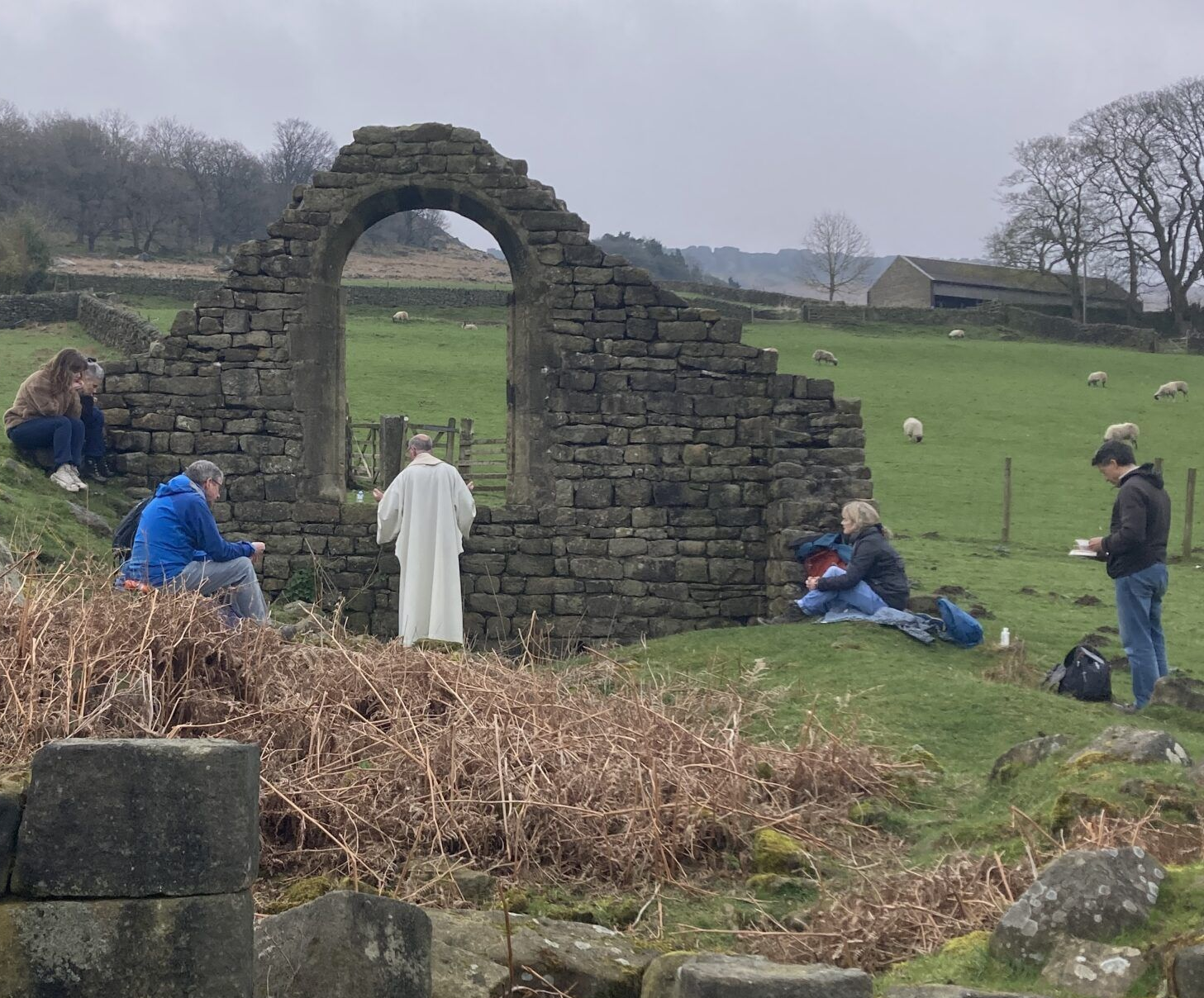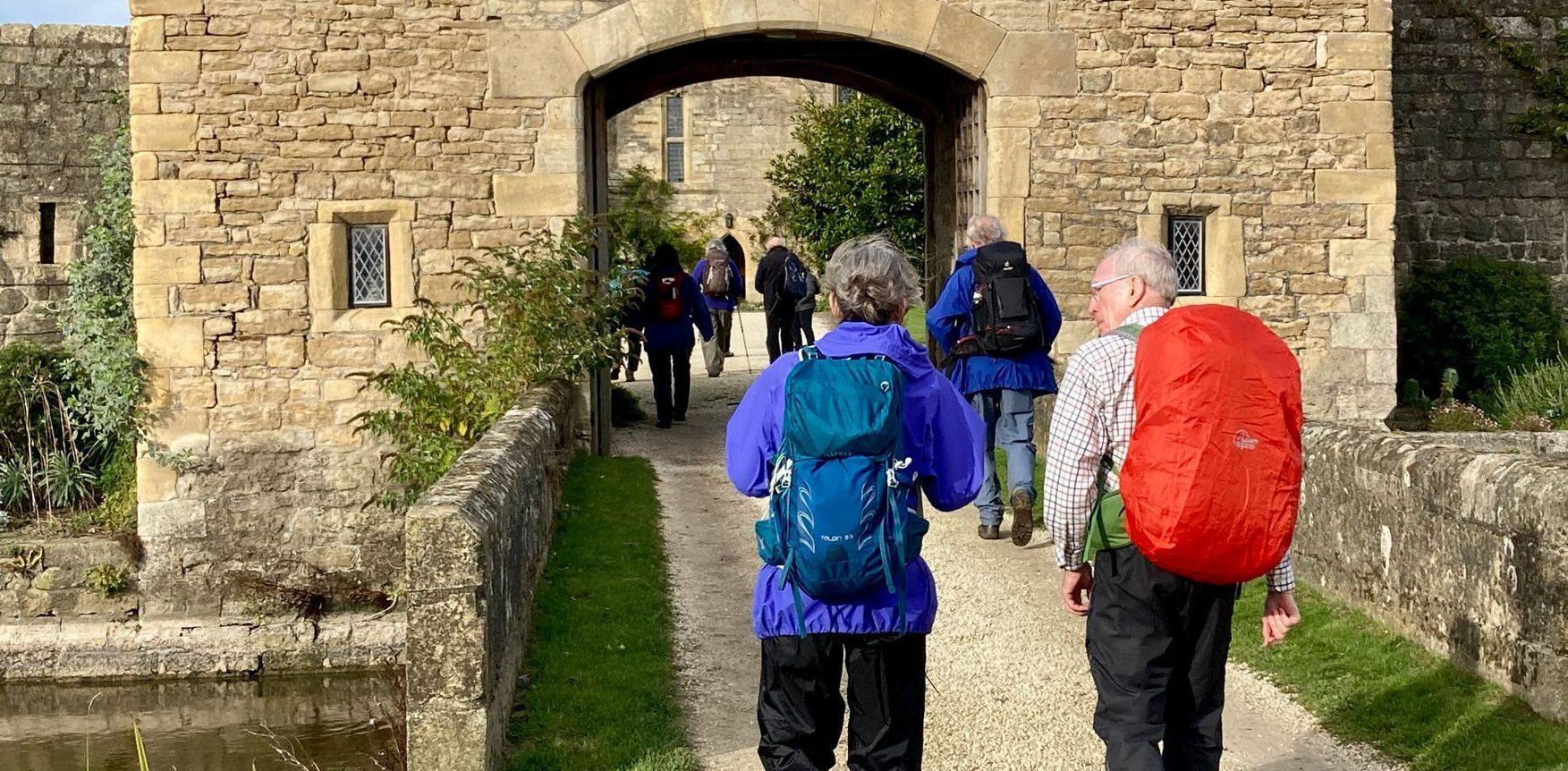Walk like an agnostic?
Soon my Angel came again;
I was armed, he came in vain;
For the time of youth was fled,
And grey hairs were on my head.
The Via Francigena is a pilgrim route from Canterbury to Rome. My Walking Buddy (WB) and I, both on the wrong side of 60, have flown in from the old continent at the other end of the earth, to follow the VF across the top of France into Switzerland, up to the Great Saint Bernard’s pass.
Conveniently for hikers who are not built for speed, the English part of the VF is easily broken into two bite-sized pieces, about 17 kilometres to Shepherdswell, and a similar distance into Dover. From here, the entrepôt between England and the main landmass of Eurasia since prehistoric times, the modern pilgrim takes a ferry to Calais.
It is always difficult to explain, even to oneself, why some of us eschew creature comforts for weeks or months at a time to walk day after day, enduring aches, pains and blisters, ticks, flies and a myriad other problems that a long road can throw at you. WB was brought up Protestant and so has little affinity to the religious notion of pilgrimage. But he has also just come through a year of chemo and is keen to test his mettle. I am coming along for the ride, more accurately, the hike.
Pilgrimage was really the earliest form of tourism (travel for pleasure alone was not imagined until many centuries later). Etymologically, a pilgrim is simply an outsider, someone passing through. And even after the word took on religious connotations, pilgrims, as we know from Chaucer, were a mixed bunch, enjoying the social aspects of the journey, and not entirely focussed on a sacred mission. In that wide sense, an agnostic, brought up in an Indian-Bengali Hindu cultural context, can perhaps fit into that social process of pilgrimhood while not identifying with the end product of the pilgrimage, be that reaching Rome, investing in a stairway to heaven, or some other more complex version of settling accounts with eternity.
Let’s say, one way or another, everyone on the VF is a pilgrim.
What distance we are walking is a little unclear at the start (and to be honest, now 800kms along the way, it is not much clearer). Pilgrims leave Canterbury Cathedral along the appropriately named Church Street, well-marked with VF signage. At St. Augustine’s Abbey an information board shows the distance to Rome: 1800 kilometres. A kilometre or so further along, at St. Martin’s church, the distance has increased by a whole 100 kilometres to 1900!
Mileposts on the walk from Shepherdswell to Dover are equally confounding showing ‘3 miles to Dover’ at three successive cross-roads a kilometre or two apart. An American day-walker overtaking us at the third of these, calls out reassuringly: ‘well 3 miles is an encouraging distance, right? Just means not-long-to-go-now’.
We started from Canterbury on Easter Monday in pouring rain and gusty winds up to 50 miles-an-hour. Had I been planning a little holiday ramble I would have abandoned the idea as soon as the storm clouds gathered overhead, stayed in and eaten the remaining Easter eggs. Instead we set off in wild weather: the rain didn’t let up until we were about 5 kilometres from Shepherdswell. The high head-winds slowed us to a crawl. But what’s an extra hour or two, when you are going to walk pretty much daily for the next nine or ten weeks, over which the seasons will change, as will the terrain?
A potted history of the Via Francigena could go thus: Romans built very straight, hard-surfaced roads connecting Dover to London in the first century AD (or CE, the Common Era, as it is now called). Though built for military conquest, the roads also opened up the possibility of other forms of travel - for trade, adventure and importantly as Christianity spread west, religious pilgrimage from the British Isles to Rome.
As far as I can tell, the practice and infrastructure of this pilgrimage, Via Romea, the road to Rome, were already established several centuries before Sigeric became the Archbishop of Canterbury. A predecessor Aelfsige had set off on the same venture, some decades earlier and come, literally, to a dead end in the icy Alps in the winter of the year 959! Sigeric travelled in the summer of 990, recording the names of the towns he passed and perhaps stopped at for food and lodgings. The manuscript somehow survived and became the foundation of the modern VF.
Canterbury Cathedral, certainly after the murder and canonisation of Thomas Becket in 1173, would have been vastly more famous as a destination for Believers seeking miracles rather than just a staging post for the journey to Rome. To the contemporary visitor, the starkly grand Cathedral resonates with the martyrdom and mysteries surrounding Becket. Sigeric himself gets no particular attention despite the increasing global popularity of his itinerary amongst modern pilgrims from Britain to Rome. The tiny plaque marking the official start of the Via Francigena, placed on the green at the south side of the Cathedral in 2007, is not visible unless you go looking for it. And despite the enthusiasm of one or two volunteers, there is very little engagement by the Cathedral with the pilgrims heading off on the VF.
Sigeric, like most Archbishops, was all but forgotten, until the ‘rediscovery’ of Via Francigena first by a group of Italian researchers and later taken up by enthusiasts in the UK (https://www.academia.edu/4354575/DISCOVERING_THE_VIA_FRANCIGENA).
Like other travellers, Sigeric most likely sailed from Dover to land in Sumeran/Strouanne (now Sombre), near modern Wissant. According to Dr Remy Cordonnier, Senior Archivist at Saint Omer’s medieval library, it is highly unlikely that an Archbishop of a famous and wealthy Cathedral would have actually set off on foot. Nor, despite the sculpture of Sigeric on a donkey in Glastonbury, did the archivist think that Sigeric went all that way on a bare-backed donkey. Most probably, said Dr Cordonnier, Sigeric would have been in a horse drawn carriage, though members of his retinue probably walked.
Nor would Sigeric have followed the precise route set out in most of the contemporary maps and apps of Via Francigena. He would have used the main, straight, Roman roads that connected the towns he passed through and listed. In the 10th century you would have to be a brigand or a lunatic to take curly forrest tracks by choice, as contemporary walkers tend to do.
Saint-Omer, not far from Calais, is not mentioned in Sigeric’s itinerary. We digressed because the historic city famously contains a unique medieval library with antecedents going back to the 7th century and the most famous Archbishop of Canterbury, Thomas Becket, took refuge here. No, he didn’t walk. Chances are, says the archivist, Becket sailed straight into Saint-Omer as the waterways of the time would have made this the fastest way to escape from Canterbury into France.
That of course, is quite another story, though it does add to my sense that, given the way the earth has changed over the last thousand years, hills flattened and waterways redirected, the modern VF is nothing like a replica of Sigeric’s path. It is a late 20th century construct, not essentially different from the many long trails in the UK : a linked set of paths, way-marked for convenience, designed for tourists who walk, runners who set records, with options for cyclists and pilgrims too.
We are aiming to reach the Great St. Bernard’s Pass, located at about 2500 metres above sea level, the highest point on the walk from Canterbury to Rome. Many medieval travellers including Archbishop Aelfsige died in this area, trying to cross the dangerous Alps into Italy. The pass is named after Bernard of Menthon, who was Archdeacon of Aosta, at the foot of the mountains, some 2000 metres below the pass. Sometime around 1050 Bernard established a hostel for travellers, a mortuary to house the bodies of those who could not be saved, and a monastery for those who would live to serve on these magnificent, dangerous, mostly snow-covered mountains.
Bernard was not canonised for some six centuries after his death. Destroyed and rebuild many times, the hostel has stood open for the weary and the sick ever since its opening. Such charity, commitment, inspiring legacy that has stood now for a thousand years, surrounded by the grand and terrifying Alps, must make St Bernard’s Pass as sacred as any place on earth! In any case, Indians have always imagined that their gods live up on the top of the icy mountains (Himalaya is the land of ice). What better place then to end the pilgrimage?
Earlier this year, friend, novelist and believer, Brenda Walker, said to me an ‘agnostic was someone whom the angels are yet to find.’ But an agnostic neither needs to be found nor needs to find a finality. This pilgrimage, this walk, any pilgrimage, any walk is made up of layers of human endeavour, sacrifice and achievement. A 19th century Hindu sage famously said ‘there are as many paths as you think there are’. The road out of Canterbury, tried over many centuries, forgotten, recovered, redesigned, is well worth testing as a possible way to walk, to wonder at all the grand designs of rivers and mountains, the smaller ones of roads and churches and the tiny ones of bees, flowers and birds’ nests. What a miracle to have it laid out in front of me so I can take it in, one step at a time for days on end!
Krishna Sen is an Australian academic, walker and blogger as 'Hurry Krishna'. Her blog can be found at: http://www.readingtheroad.com/
